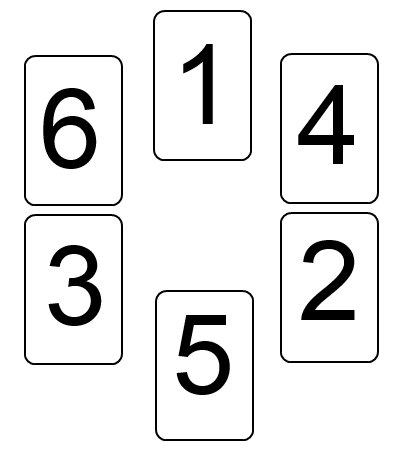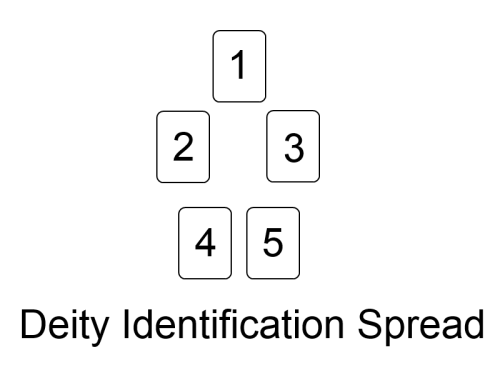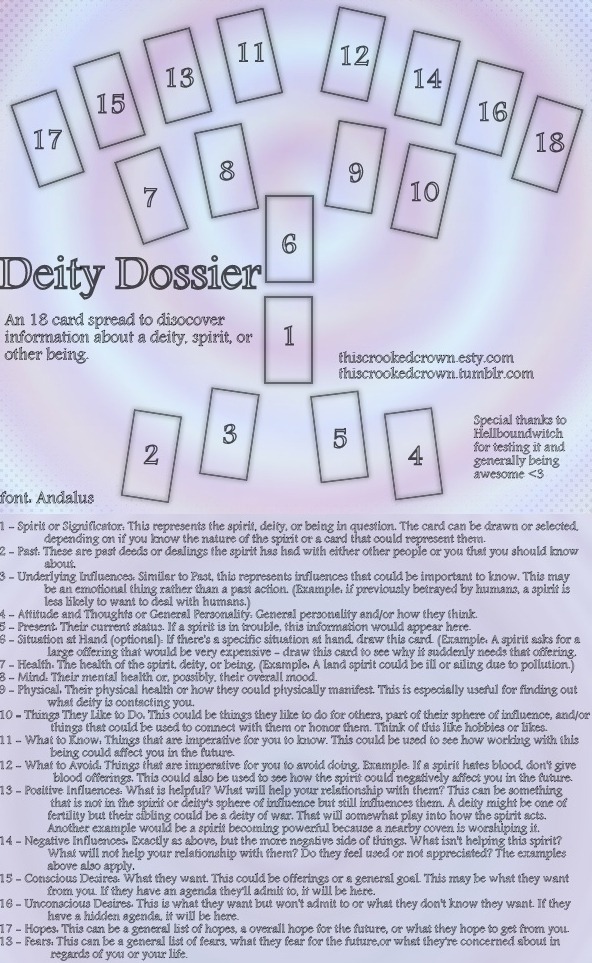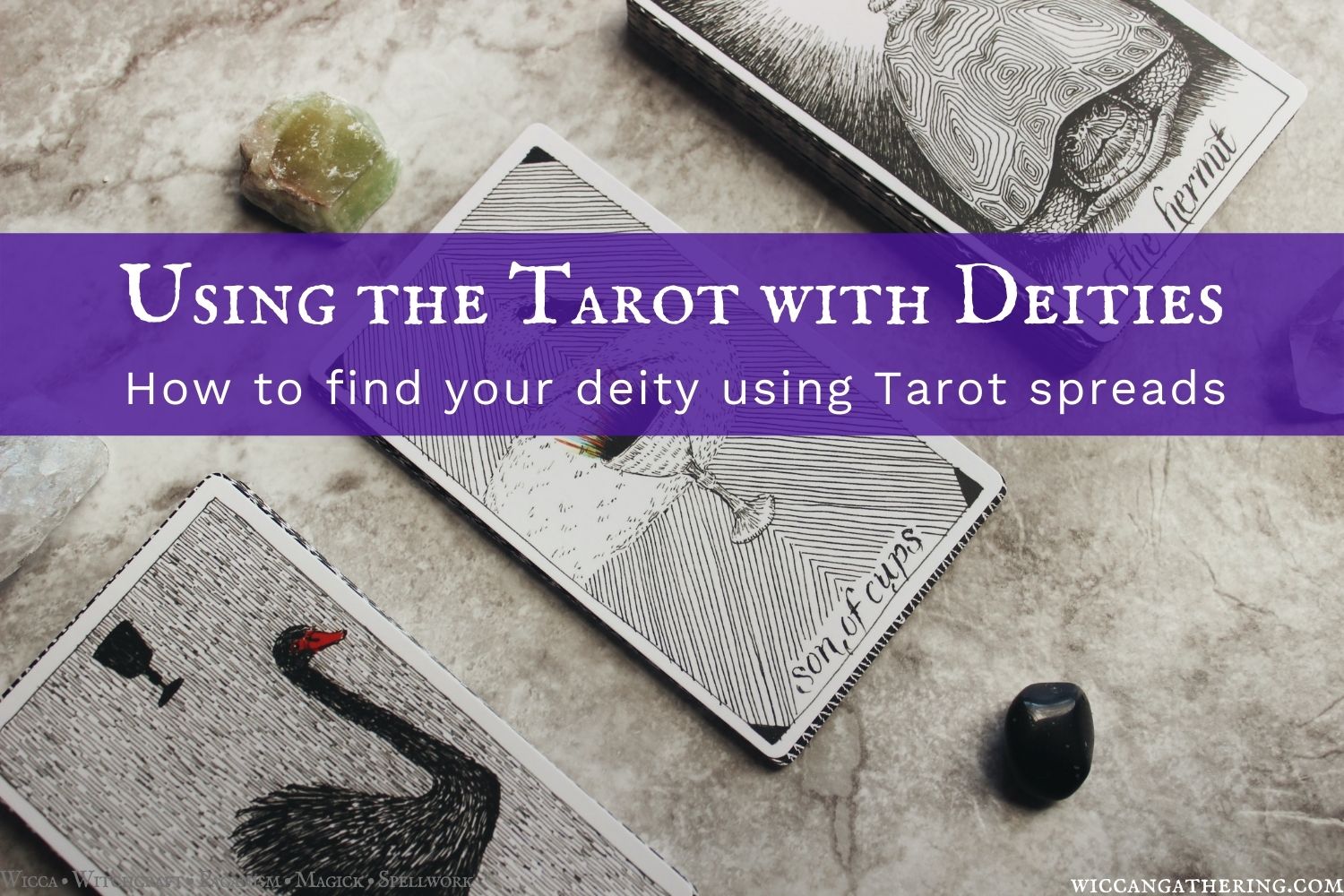Disclosure: Wiccan Gathering is reader-supported, so posts may contain affiliate links. When you click on affiliate links on our site, we may earn a small commission, at zero cost to you. If you enjoyed our content and want to pay it forward (even if you don’t intend to buy anything) please click on any of our product links. Blessed be!
The Tarot and oracle cards are much more than just for divination. They certainly can be used to divine current circumstances, but they’re so much more powerful than that!
In this article we will discuss the use of Tarot cards as a tool to use in your deity work. You’ll learn how to use the Tarot to identify, communicate with, and learn from your god or goddess. We’ll go over using a Tarot card as a ritual and meditative base to commune with your deity. We’ll also cover Tarot spreads to use in search of your deity, like the Deity Communication spread, the Deity Identification spread, and others.
Read on to learn the power of the Tarot in deity work!
Why Use The Tarot in Deity Work?
Deity work is one of the most difficult but also most rewarding aspects of Wicca and/or witchcraft.
Goddesses and gods provide comfort when needed as well inspiration for your soul’s journey through this world! It’s important to show respect and put time into researching your deities. Understanding why you’re drawn will help with the relationship-building process, as well as knowing the deity intimately.
The Tarot is a tool you can add to your deity worship tool belt. It can help get you closer to your deity than you were before. Since a patron relationship is all about communing and understanding your god, the Tarot reveals greater depth to help you draw closer.
How to Use the Tarot to Work With Your Deity
There are many things you can do with gods and goddesses when using the Tarot as a tool. To get started, you must first find a card which represents your god or goddess.
Think of the powers of your deity, which animals they associate with, and their strengths. Try to find a Tarot card which pairs well with the energy and likeness of this god. Some deities have easy Tarot pairings, like Odin and The Hanged Man. Others are more subtle. In the end though, you can use any card where you get a strong feeling of association with that deity.
When looking at particular Tarot decks, some work better than others. You can experiment with different decks and see what works best for you. There are some decks specifically for deity work. There are also decks specific to a certain culture/pantheon/deity.
See the below decks which can offer a unique and interesting perspective!
1. Use a Tarot Card to Represent Your Deity on Your Altar
Rather than using statues, idols, or symbolic items, it can often be easier to use a Tarot card. The card can symbolize your god or goddess literally or energetically (and sometimes both).
If you have an altar to this deity, place the card on your altar directly. If your altar is multi-purpose, then keep the card in the room where you can see it easily while doing deity work.
Tarot cards used like this for gods and goddesses look great in a frame to give them reverence and keep them protected.
2. Use a Tarot Card as a Journaling Prompt
With your god or goddess represented in a Tarot card, spend some time meditating on what this means. Why do you feel the deity and the card are related? What else does this card tell you about your deity? What hidden lessons might you learn from this experience?
Spend some time in a quiet room pondering on these questions and journal what you find. You might be surprised on the deep connections you can find, and how much closer you can get to your deity!
2. Use a Tarot Card as a Meditative Base
To get a bit deeper into your cosmic connection with your goddess or god, take a meditative journey using your Tarot card.
In a quiet, private room (you can play soft music or music of your god’s culture if you like), light a candle so it will illuminate your card, then turn out the lights. Choose the color of your candle to correspond to your god’s qualities.
Sit comfortably and focus on your breathing to relax. Once you’re in a meditative state, open your eyes and focus on the card. Try to reach a state of trance as you reflect on the card. Let your body feel heavy and allow wisdom from the realm of your deity to enter your consciousness. Journey to a place where you can commune with your deity.
Feel free to ask your goddess any questions you have. Ask them to tell you a story, or to surprise you. You may receive responses in words, images, symbols, noises, or other forms of communication.
3. Use a Tarot Spread
One of the more advanced uses of Tarot cards in deity work is using a Tarot spread. In order to do this, you must be both proficient in the Tarot and deity work.
If you are new to Wicca or witchcraft, or you are inexperienced with Tarot spreads, then this may be a bit too much for you. The spreads may just create noise for you. If you’re not clear on the meaning of the cards, or how to interpret their placement and symbolism, then you may become overwhelmed.
A spread is a lot of information, so you need to be able to parse all of these details out. Otherwise you just end up confused. So these spreads work best when you’re a skilled practitioner of the Tarot.
Tarot Spreads for Deity Work
How to Use the Tarot to Find Your Deity
If you’re ready to work with a patron goddess or god, then a deity identification spread can help you in your search.
To start, you’ll need to begin your search outside of the Tarot. See our article on How to Find Your Deity for tips on how to start your search. Before resourcing a Tarot deck, you’ll want to make sure you’ve researched your potential patron thoroughly.
A big part of searching for your patron god or goddess is listening for signals they are sending you. A Tarot spread can be helpful to confirm if something you’ve seen or heard is actually a signal or not. Or if it’s a signal from your deity (it could be from another deity).
It can also be used as a way to confirm if a deity you are exploring is the right patron for you. As not all deities send signs, using a Tarot spread can provide more information about your decision to work with a deity.
Finally, a spread can also be a way to reach out to a deity who we are considering as a patron. After you do this, you may suddenly start seeing your god or goddess popping up everywhere!
Drawing Multiple Cards for Deity Work Using Tarot Spreads
In general it’s usually ok to draw multiple cards for a position when using these spreads. If your first card just isn’t doing it for you, then it’s perfectly fine to draw more cards for more information. Each additional card you draw can provide more answers about their essence, symbols, and associations.
How to Interpret Deity Signs from the Tarot
Interpreting signs is the most difficult part of working with deities, and especially using the Tarot to communicate with deities.
Deity work is challenging, no doubt. It helps to think of the process of discovering and communing with a deity as a scavenger hunt. You’re never told exactly where the next location is. You’re given hints, clues, riddles, and subtle signals.
As you follow the natural progression of clue to clue, you can slowly paint a picture of your deity. You won’t be handed an answer, but you’ll have enough signs and symbols to piece together a collage of their essence.
Clues could be symbols which appear on the cards, a sound you hear while doing a reading, or a deeper meaning of the card. After some supplemental research through myths and legends, you’ll see where this clue fits in.
You’ll need to use your creativity in this search. Don’t be afraid to sit and meditate on the signs to see what comes up. Do you have a subconscious association? What other questions does it raise within you?
It may be difficult, but think how well you’ll know this deity after this process! You’ll understand who they are, what they want from you, and how you can best work together. Often the journey of discovering them is more informative than working with them afterwards.
You’re building a relationship for the long term. Answers take time to unfold, so you won’t necessarily get all the answers right away. Be patient and thorough and try to keep your mind and heart open.
Deity Communication Tarot Spread
This spread was developed by hellboundwitch on Tumblr. It’s a great starting point if you’ve never used a Tarot spread for deity work before.
on Tumblr. It’s a great starting point if you’ve never used a Tarot spread for deity work before.
It’s a six-card spread so it’s not overly complex. The spread creates a depiction of what work with a new deity will look like. It can also be used as a periodic check-in to see where you and this deity stand. It’s just an overall great to use for pursuing and establishing relationships with goddesses and gods.


- Identity of the Deity: Initially, you can use this card to verify the deity you’re in contact with (sometimes they like to cross wires). Once you can confirm it’s the correct deity, then read the card to tell you the side of the deity you’re in communication with. Deities are just like people, and they have different moods and faces. So this first card will give you a context of who you’re talking to.
- Nature of the Relationship: Use this card to determine the type of relationship you can expect with this god or goddess. Will it be friendly and casual? Formal and structured?
- What the Deity Needs From Me: Since the relationship with a deity is a two-way street, the deity expects something from you in return. You don’t get all that wisdom for free! Use this card to learn what their expectations are.
- How to Proceed: How do you go about making this relationship happen? What are the next steps?
- Potential Obstacles: Things are never simple, so there will be obstacles and other things that will get in your way. These may be the shadowy areas of your life, the things you’re afraid to shine a light on. They may also be external things too.
- Outcome: After forging a relationship, what is the ultimate outcome? What will you gain? What will you learn? How will you grow and change?
Pay special attention to the cards which are diagonal from each other. And also a card standing in between two related cards. See what you can learn from the juxtaposition of each card, which ones they are close to, and which they are far away from.
Deity Identification Spread: The “Who is my Deity?” Tarot Spread
Also developed by hellboundwitch












Each card in this spread reveals an aspect about your goddess or god. Although individually the cars just show a single feature, together they form a full image of your deity.
The ultimate purpose of this spread is to create an outline of a deity. You can think of it like a sketch. The sketch won’t be exact, and it won’t be a real-life resemblance of the god or goddess. But it’ll have the right eyes, nose, and it will catch a distinguishing birthmark. Coupled with your own research, you can use these clues to lead you to the correct deity.
The cards are as follows:
- The Deity: Similar to the Deity Communication Spread, this card is a summary of the deity. It can give a clue as to the deity’s likeness, character, disposition, or even their name.
- Quality/Trait (Negative): This card represents something “bad” or negative about the goddess or god. Think of their traditional associations. Were they well-meaning but not too bright like Thor? Were they powerful yet intimidating? The answers we find here may tie into our own dislikes and fears. Use the information you glean from this card to illuminate your own life.
- Quality/Trait (Positive): The third card is the flip side of the second card. It symbolizes a positive trait of the goddess or god. It can be anything from kindness, curiosity, generosity, or attractiveness. Also like the previous card, this aspect can also tie into your own personal preferences. In which areas do you need support? What type of deity would you like to be associated with?
- Rule/Power: In which domain does the deity preside? Foretelling? Love? Wisdom? Nature?
- Symbol or Association: This card represents something with which the deity is associated. It might be an animal, a symbol, a feeling, or an idea. Dig deep when you interpret this card. It might be obvious or the association might be well hidden.
Deity Dossier Tarot Spread
To delve even further, use the larger and more complex Deity Dossier Spread by The Crooked Crown










The spread is intended for a situation where a deity is calling out to you, but you’re not sure which one. Like the prior spreads, it gives hints and clues and paints a picture of your deity. With 18 cards, you’ll get even more bits of information than the other spreads.
The spread looks like a tree with roots, trunk, and branches. As its large and it requires time for pondering, consider laying out the spread somewhere where you can keep it safe for a few days. Casually placing cards on the floor, or on your kitchen counter probably isn’t a good idea!


- Spirit or Significator: The being in question. This card represents their overall essence.
- Past: What old baggage does this deity have? Have they had past dealings which affect them today. It’s something they want you to be aware of.
- Underlying Influences: Actual or emotional influences that are necessary for you to know. These may make the deity more likely to do something, or to have a particular aversion.
- Personality: What is the attitude of this deity. How do they think?
- Present: What’s going on with the deity lately? Get their most recent status. Are they thriving? Are they in trouble?
- Situation at Hand: This card is optional. If you feel a need for more information on a specific request or situation with the deity, draw this 6th card.
- Health: How is your deity doing? Are they feeling well, or are they ill?
- Mind: Just like the prior card, how are they doing mentally? What’s their mood like?
- Physical: What do they look like? How does their likeness appear? This is one of the most useful cards to determine who’s calling out to you.
- Preferences: What do they enjoy? How do they like to be honored? How do they prefer you connect with them? How do they like to help others?
- What to Know: How might working with them influence you? What will you be like in the future after working with this deity?
- What to Avoid: What does this deity hate? Do they have any strong aversions, which you should avoid when connecting and giving offerings to them? How might they potentially harm you in the future?
- Positive Influences: What information will improve your relationship? What would help the relationship? The answer might lie in things you can do, external events which happen, or circumstances surrounding the god or goddess.
- Negative Influences: What can sour your relationship? What do they not need? What irritates them? Do they have any pet peeves?
- Conscious Desires: What do they want from you? What offerings do they like to receive? What do they want to teach you? What do they want you to see?
- Unconscious Desires: What do they want, but don’t know it yet? What are they afraid to tell you that they want? What’s their secret plan for you?
- Hopes: What do they hope to receive from you? What are their hopes for the future?
- Fears: What are their fears of the future? What are their main concerns? What worries them about you?
Mini Deity Dossier Tarot Spread
The Crooked Crown also has a scaled-down version of the Deity Dossier called the Mini Deity Dossier Spread. It’s six cards in total so it’s much smaller than its larger counterpart. And the card roles are a mix from the first two spreads mentioned in this series.
It is a more brief way to determine which deity has contacted you, or to make contact with a deity yourself.
- Spirit: Who is the spirit?
- Qualities: What is the spirit’s personality like? What are its abilities? What traits does it possess?
- Signs: How will the deity manifest? How will they appear? What omens should you look for?
- Wants: What do they want from you?
- Things to Know: What information does this deity want you to know?
- Things to Avoid: What will take you further from this deity? What do they dislike?
Commune With Your Deity Tarot Spread
This spread was created by Self Tarot










By identifying how they are currently influencing your life, and how they have affected you in the past, it gives some unique clues that the other spreads don’t.


From this spread you can glean what this deity looks like, and how they manifest themselves into your world. It also hints at how they’d like to begin the process with you.
- Spirit: Who is this deity?
- Personality: What is this deity like?
- Realm: Where is this deity’s sphere of influence?
- Status: Where do you currently stand with this deity? Close-knit? Businesslike?
- Past Manifestations: How was this deity present in your life before?
- Current Influence: How is this deity affecting your life today?
- Why: Why do you need to work with this deity?
- Needs: What does this deity need from you?
- Likes: How would this deity like to be honored? What would they like you to do for them?
- Improvements: What can you do to improve the relationship?
- Need to Know: What does this deity feel is important for you to know?
The Tarot and Deity Association
To help you get started with the Tarot and divine connections, we’ll review each card in the Major Arcana and some deity associations you can use based on that deity’s energy, meaning, and character.
The Fool (0 or XXII)
Aditi, Aeolas, Bes, Harpakhered, Loki, Pan, Shu, Zeus
The Magician (I)
Hermes, Mercury, Ptah, Thoth
High Priestess (II)
Artemis, Ceres, Demeter, Diana, Hecate, Isis, Khonsu, Luna, Selene
The Empress (III)
Aphrodite, Brigid, Danu, Hathor, Hera, Isis, Juno, Mut, Saraswati, Venus
The Emperor (IV)
Amon, Aries, Athena, Horus, Jupiter, Mars, Minerva, Vishnu, Zeus
The Hierophant (V)
Dionysus, Liber, Osiris, Pater, Serapis, The Dagda, Zeus
The Lovers (VI)
Aphrodite, Ares, Castor, Eros, Isis, Janus, Krishna, Mars, Osiris, Pollux, Psyche, Venus
The Chariot (VII)
Apollo, Khepera, Manannan, Victoria
Strength (VIII)
Bast, Hercules, Heracles, Hestia, Mahashakti, Sekhet, Vesta
The Hermit (IX)
Astraea, Atum, Cronos, Persephone, Proserpina, Saturn, Vesta
The Wheel of Fortune (X)
Amoun, Fortuna, Jupiter, Libertas, Tyche, Zeus
Justice (XI)
Athena, Lakshmi, Maat, Minerva, Themis
The Hanged Man (XII)
Adonis, Dionysus, Mut, Neptune, Nu, Osiris, Poseidon, Tefnut
Death (XIII)
Anubis, Ares, Hades, Mars, Nephthys, Pluto, Shiva
Temperance (XIV)
Artemis, Diana, Chiron, Iris, Neith, Sophrosyne
The Devil (XV)
Apep, Bacchus, Dionysus, Faunus, Min, Pan, Priapus, Set
The Tower (XVI)
Ares, Badb, Horus, Kali, Macha, Mars, Montu
The Star (XVII)
Astraea, Aphrodite, Elpis, Ganymede, Hebe, Juno, Juventus, Medb, Sothis, Venus
The Moon (XVIII)
Anubis, Artemis, Brigid, Diana, Hecate, Khonsu, Luna, Neptune, Poseidon, Selene
The Sun (XIX)
Apollo, Helios, Ra, Sol, Surya
Judgement (XX)
Aten, Heka, Hephaestus, Neith, Neter, Osiris, Vulcan
The World (XXI)
Ceres, Chronos, Demeter, Gaea, Geb, , Nataraja, Ptah, Saturn, Tellus
Sources
How to Use Tarot to Work with Gods










Stop Using the Deity Identification Spread










Working With a Deity Tarot Spread












